Hookahhead
Active member
Even though I'm no where near India, I happen to live in an area where Neem grows everywhere around me. With a 15 minute walk I can count 30+ large Azadirachta indica trees. They grow wild along the beach, but as far as I can tell nobody makes use of them. So I have started collecting neem leaf and fruits (to process the seed). I wanted to share with you a little bit about what I've learned in making use of fresh material.
About a year ago I first learned neem trees grow in my area. I read up a little on the identification characteristics were... i.e. what the bark, leaves, flowers, and fruits looked like. The very next day I found my first wild neem, then about 20 more around it. Surprisingly, there doesn't seem to be much domestic use of the product. I can't find large quantities of neem oil or cake, or info about many people processing it in the area. Luckily there are a few, which is how I first learned about it being here "naturally".
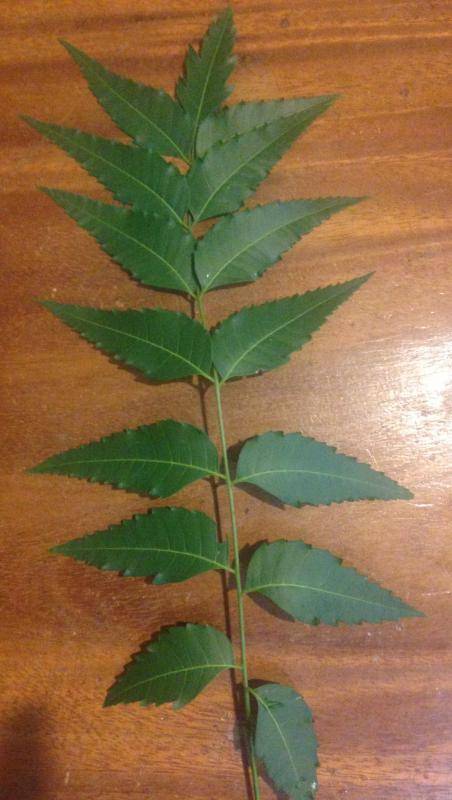
The leaves are very distinct. Dark green and glossy, the leaves are the first thing I look for now. Out of curiosity, my wife and I have both tasted them and agree that they are very bitter and not something we want to try again. I have used them by shredding the leaf and soaking it in a bucket of water for 24-36 hours. It will take on a garlic like smell, but not as strong as garlic. Any longer than 36 hours in the tropics and it definitely starts fermenting. We used the 24-36 hour stuff as a flea dip on a kitten we rescued. Although it wasn't 100% effective for this, the applications (3) did significantly reduce the population from an infestation to where we only see an occasional flea. It also made the kittens hair noticeably soft. I used the water and leaf as mulch on a few mint, basil, and green pepper plants with no ill effect, but it also did not eliminate fungus gnats in those containers.
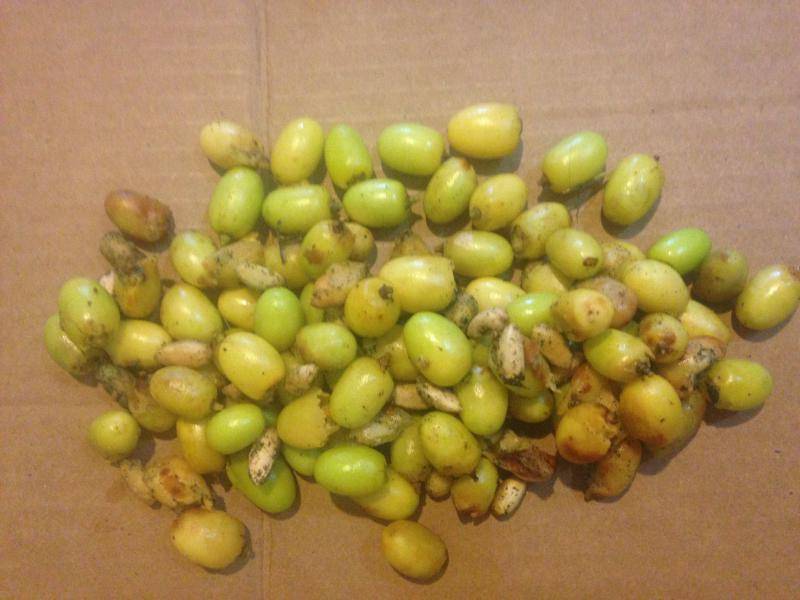
Today I spent 10 minutes in the shade of a large neem, right along the beach, and collected this many fruits off the ground.
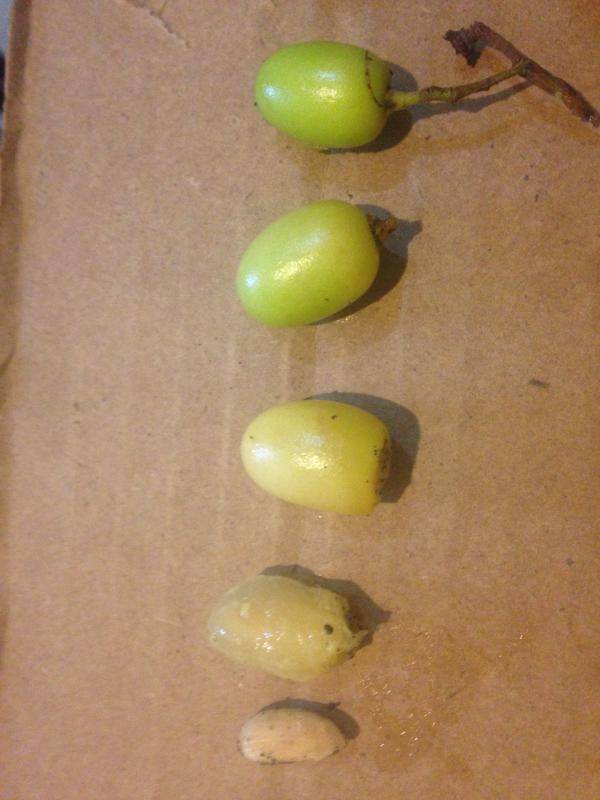
This picture shows the stages of ripeness in the fruit. Bright green is immature fruit (top) and should be discarded. The seed is not fully developed and difficult to remove from the fruit. Greenish-yellow fruit (second) is beginning to mature. The seed is typically usable, as long as it easily slips out of the skin. Yellow fruit (middle) is fully mature, and what you're looking for. The 4th one shows what the seed with pulp on it looks like, it kind of reminds me of a wild grape. The last one shows the clean seed, that's what your after!
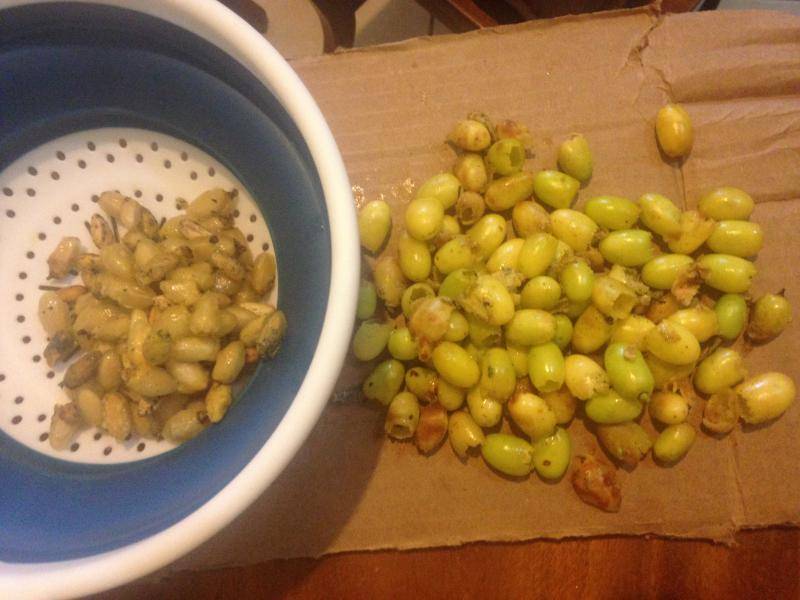
So after collecting the fruits, you want to separate the seed from the skin. This is super easy to do, you just pinch the bottom of the fruit and the seed squirts out the top. This whole process probably took 3 minutes tops.
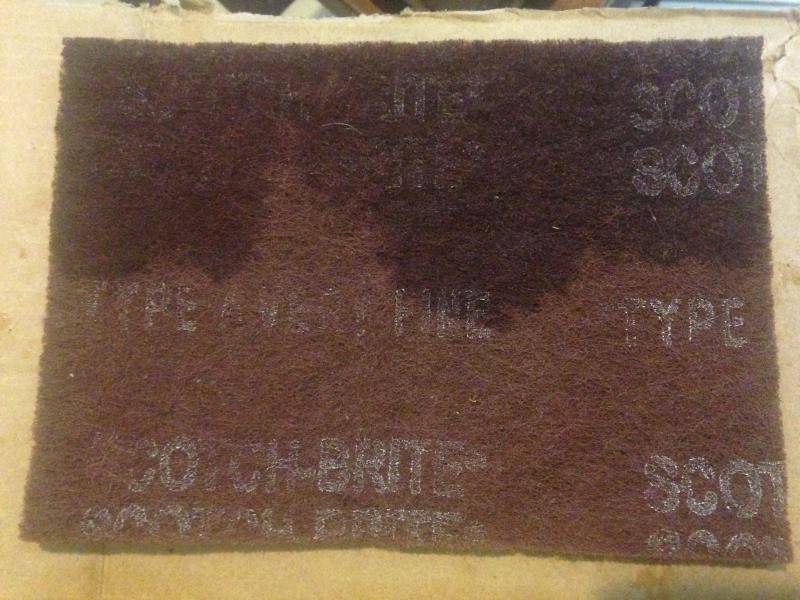
Next you need to remove the fruit pulp from the seed. If you don't do this, they will mold and ferment instead of dry properly. The pulp is very slippery and sticks to the seed fairly well. In the beginning I tried scraping it off with just a fingernail under water, but that was a lengthy and annoying. I quickly learned to use an abrasive pad such as the one pictured. Underwater, place a few seeds in between and rub your hands back and forth for 20 seconds or so. It probably took me 7-8 minutes to do this batch.
About a year ago I first learned neem trees grow in my area. I read up a little on the identification characteristics were... i.e. what the bark, leaves, flowers, and fruits looked like. The very next day I found my first wild neem, then about 20 more around it. Surprisingly, there doesn't seem to be much domestic use of the product. I can't find large quantities of neem oil or cake, or info about many people processing it in the area. Luckily there are a few, which is how I first learned about it being here "naturally".
The leaves are very distinct. Dark green and glossy, the leaves are the first thing I look for now. Out of curiosity, my wife and I have both tasted them and agree that they are very bitter and not something we want to try again. I have used them by shredding the leaf and soaking it in a bucket of water for 24-36 hours. It will take on a garlic like smell, but not as strong as garlic. Any longer than 36 hours in the tropics and it definitely starts fermenting. We used the 24-36 hour stuff as a flea dip on a kitten we rescued. Although it wasn't 100% effective for this, the applications (3) did significantly reduce the population from an infestation to where we only see an occasional flea. It also made the kittens hair noticeably soft. I used the water and leaf as mulch on a few mint, basil, and green pepper plants with no ill effect, but it also did not eliminate fungus gnats in those containers.
Today I spent 10 minutes in the shade of a large neem, right along the beach, and collected this many fruits off the ground.
This picture shows the stages of ripeness in the fruit. Bright green is immature fruit (top) and should be discarded. The seed is not fully developed and difficult to remove from the fruit. Greenish-yellow fruit (second) is beginning to mature. The seed is typically usable, as long as it easily slips out of the skin. Yellow fruit (middle) is fully mature, and what you're looking for. The 4th one shows what the seed with pulp on it looks like, it kind of reminds me of a wild grape. The last one shows the clean seed, that's what your after!
So after collecting the fruits, you want to separate the seed from the skin. This is super easy to do, you just pinch the bottom of the fruit and the seed squirts out the top. This whole process probably took 3 minutes tops.
Next you need to remove the fruit pulp from the seed. If you don't do this, they will mold and ferment instead of dry properly. The pulp is very slippery and sticks to the seed fairly well. In the beginning I tried scraping it off with just a fingernail under water, but that was a lengthy and annoying. I quickly learned to use an abrasive pad such as the one pictured. Underwater, place a few seeds in between and rub your hands back and forth for 20 seconds or so. It probably took me 7-8 minutes to do this batch.
Last edited:


